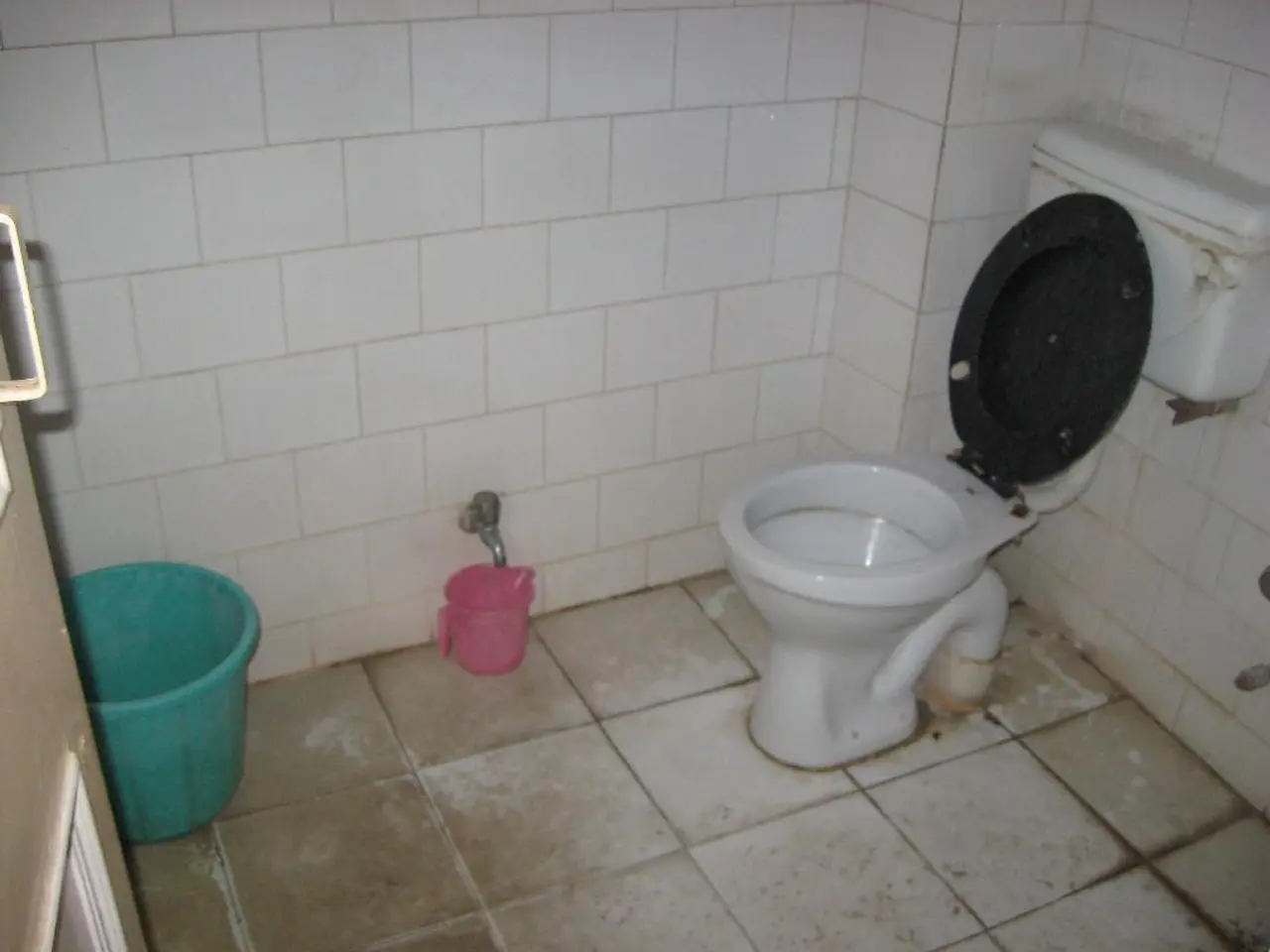Impact of Cultural Norms on Bathroom Renovation Decisions
In the realm of interior design, bathrooms have emerged as intricate mosaics of culture, history, and identity, with each region showcasing unique design choices that mirror its cultural values.
Automated lighting systems, shifting colors to set the mood while conserving energy, are transforming bathrooms in the Western world, enhancing functionality without sacrificing style. On the other hand, Middle Eastern designs, steeped in tradition, feature vibrant hues like deep reds and golds, symbolizing warmth and hospitality.
East Asian cultures, such as China and Japan, reflect deep historical traditions and philosophies in their bathroom and interior design. Chinese bathrooms often incorporate ceramics and porcelain, drawing on centuries of porcelain mastery and symbolic motifs like dragons and auspicious creatures. Japanese design, influenced by Zen Buddhism and aesthetic principles like wabi-sabi, emphasizes simplicity, minimalism, and harmony with nature, resulting in uncluttered, functional spaces with natural materials and careful placement of elements to evoke calm and balance.
Western bathroom design has been shaped by technological advances and changing cultural styles. The mid-20th century American embrace of pastel "Mamie Pink" bathrooms, which reflected postwar optimism and domesticity, is a testament to this. Contemporary Western bathrooms, however, prioritize hygiene, technology, and spa-like comfort, influenced by modern aesthetics and lifestyles.
In African cultures, aesthetics and cultural identity play significant roles in shaping not just outdoor furniture but home environments broadly, emphasizing sustainability and handcrafted artisan techniques that bring heritage and natural materials into modern design. This trend likely extends to bathroom decor and design, where cultural motifs, materials, and craftsmanship express identity and environmental values.
The blending of various cultural influences in bathroom design results in unique and inspiring spaces. For example, a Moroccan shower adorned with intricate tiles is an example of such unique design choices. Japanese philosophy, such as "Shinrin-yoku," emphasizes the integration of nature in design, aiming to bring a soothing presence and establish a connection to the world outside. This is reflected in the tranquil soaking tubs found in Japanese onsen and Scandinavian homes.
Moreover, cultural values influence the materials used, aesthetic principles, function, and ritual of bathroom design. Porcelain and ceramics are commonly used in East Asian designs, while handcrafted natural materials are favored in African-influenced designs. Aesthetic principles range from minimalism and frugality in Japan to symbolic decoration and auspicious motifs in China, and colorful, nostalgic, or sleek modern styles in the West.
Bathrooms, once merely functional spaces, have evolved into personal sanctuaries that reflect cultural values. The fusion of technology with traditional design elevates bathroom experiences, turning them into havens of enjoyment and relaxation. A chic French vanity accented with artisan fixtures is an example of elevating the everyday into the remarkable.
By celebrating diversity in design, we cultivate a sense of global unity. Smart bathrooms, with features like heated floors and automated faucets, are transforming design by enhancing functionality without sacrificing style. As we continue to explore and embrace diverse design influences, bathrooms will undoubtedly continue to serve as a testament to our cultural richness and shared humanity.
For more insight into this topic, visit elegant showers au.
[1] Traditional Chinese Porcelain and Its Cultural Significance [2] The Evolution of Western Bathroom Design [3] Zen and the Art of Bathroom Design: Japanese Influences [4] African Design Trends: Sustainability and Heritage in Modern Interiors [5] The Blending of Cultures in Modern Bathroom Design
- Smart systems, including heated floors and automated faucets, are becoming standard features in modern bathroom designs, showcasing advancements in technology.
- In the realm of fashion-and-beauty, people are integrating smart technology into their personal care routine, such as AI-powered skincare devices.
- Home-and-garden enthusiasts are capitalizing on technology-driven innovations, like smart irrigation systems that optimize water usage based on local weather conditions.
- The education-and-self-development sector is leveraging AI and automation to offer personalized learning experiences, making education more accessible and efficient.
- A smart bathroom, equipped with LED mirrors that display the news or weather, is the epitome of a technology-enabled lifestyle.
- A 21st-century bathroom, designed with sleek, minimalist lines and equipped with contemporary technology, blurs the line between luxurious living and practicality.
- The integration of technology in various aspects of our lives, from learning to personal care, demonstrates the power of innovation to transform and enrich our lifestyles.




